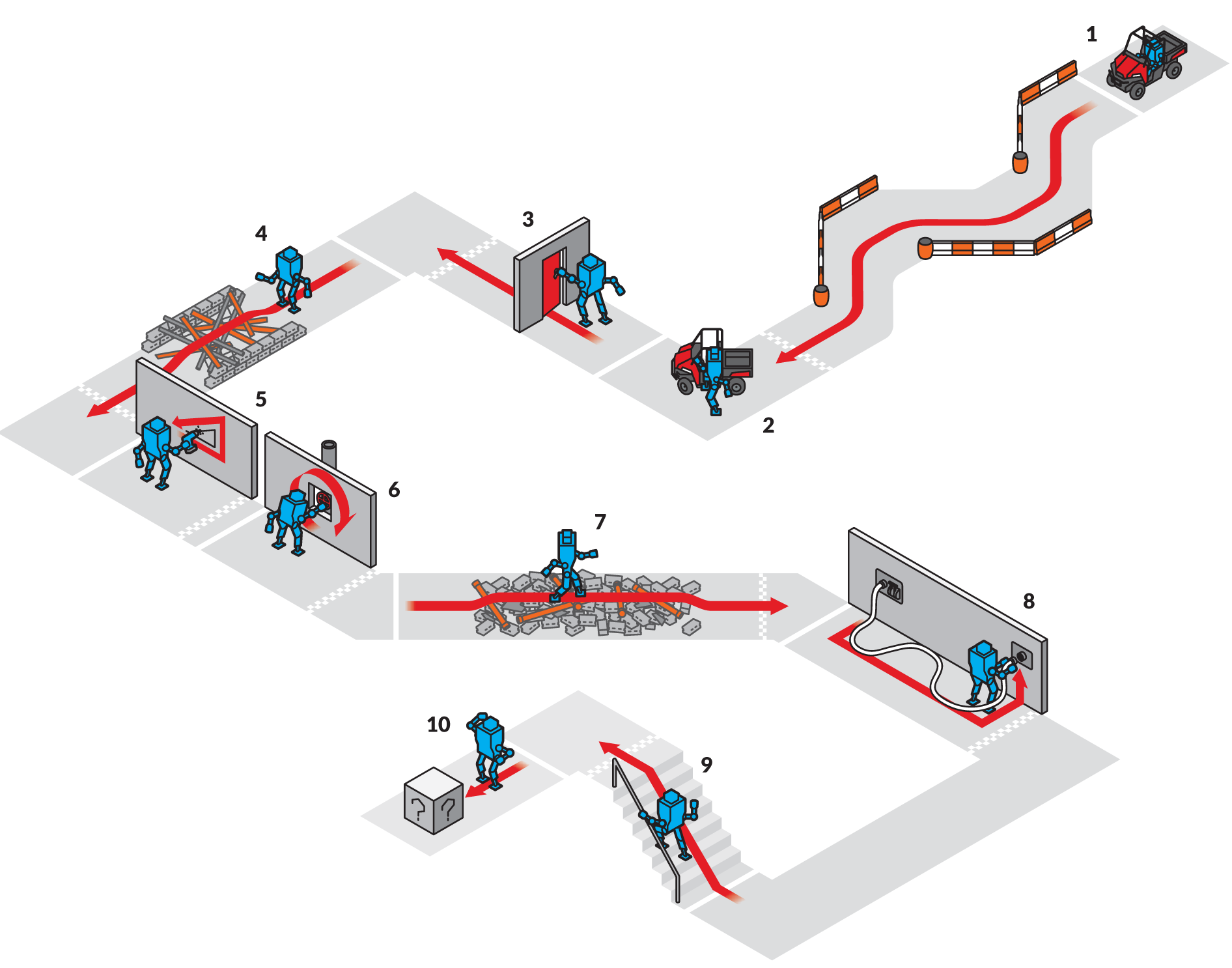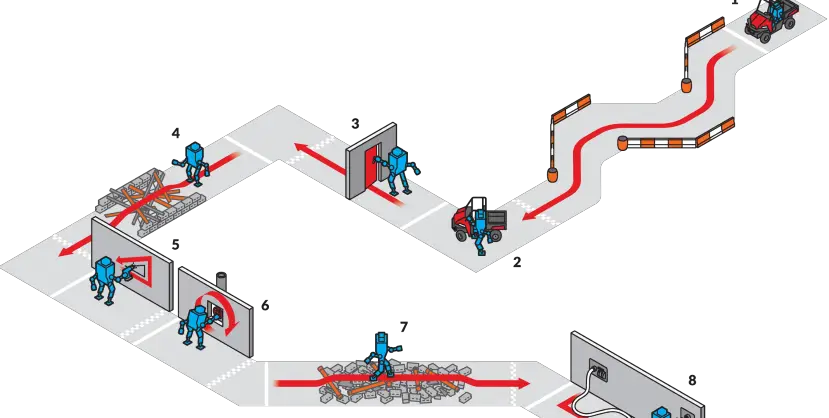Humans are great at doing stuff, but we’re also doughy squishy delicate creatures that are woefully prone to burning, breaking, asphyxiation, and all other variety of nasty ways to buy the farm. Wouldn’t it be fantastic if robots could be sent into some of the most dangerous areas to help save meatbags like us? The DARPA Robotics Challenge wants to get us there sooner rather than later. They’re offering up a cool $2 million to the team whose robot can successfully complete a series of challenges that might be simple for you and me, but are exceptionally challenging for a robot.
Spurred on by events such as the World Trade Center collapse on September 11th, 2001 and the Fukushima Daiichi Nuclear Power Station meltdown in 2011, DARPA hopes that in the future, robots can be used to search rubble for survivors or enter radioactive areas unsafe for humans to prevent further damage as was caused in Japan. To that end, the DARPA Robotics Challenge Final will put the competing teams through a series of tests which must all be completed one after another.

First – drive a car through an obstacle course. Second, get out of the car. Third, open a door and step through the doorway. Fourth, clear or climb over a pile of debris. Fifth, pick up and use a tool to cut a hole in a wall. Sixth, reach through an opening and turn a valve. Seventh, walk over a path of loose debris and pipes. Eighth, pick up a plug and insert it into the proper receptacle. Ninth, climb a flight of stairs with one handrail, and finally, well, the last step is a surprise so robots need to be ready for anything, though it’s described as a surprise manipulation task.
I think we can all agree that none of those steps would be particularly challenging for a human. Most of us could probably even clear this course in the matter of a few minutes. But what if the course were on fire, or covered in bees, or maybe didn’t have any oxygen? Humans would probably have a bit of trouble under those conditions. Thankfully robots don’t need oxygen, are made out of metal thereby rendering them at least slightly less flammable, and probably aren’t afraid of bees.
Finals for the challenge are set to start in June, and competitors will have some new challenges to incorporate into their design before then. For example, up until now robots could be tethered. For the final, they’ll need to be cordless. Operators will also have to deal with their communication to their robots being cut off periodically. Described as similar to a cell phone dropping a phone call, this really would simulate real world troubles where it’s entirely possible that communication could be lost. Add those to the entire obstacle course, and it’ll take some real ingenuity to win this challenge.
[button link=”https://www.sciencenews.org/article/designing-robots-help-disaster?mode=topic&context=96#video” icon=”fa-external-link” side=”left” target=”blank” color=”285b5e” textcolor=”ffffff”]Source: ScienceNews.org[/button]
Last Updated on November 27, 2018.










